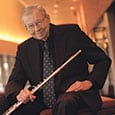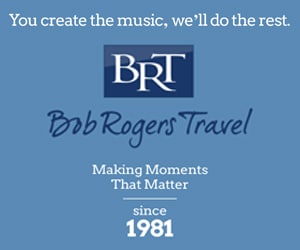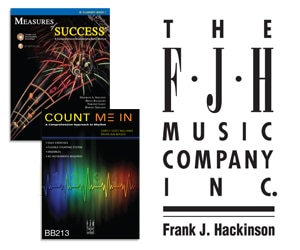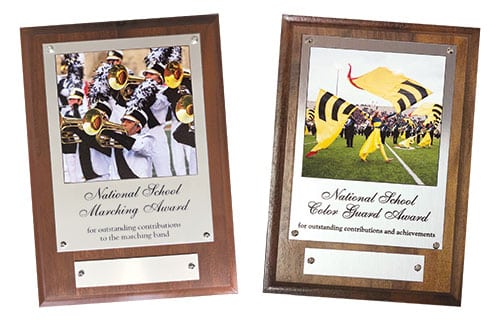When preparing jazz ensembles for festivals, remember that success or failure is largely the result of decisions the director makes before the first note is taught. Common themes emerge that separate the successful groups from those that have potential but have not yet made that next step. There are several key areas to focus on to achieve the best results.
Programming: It is possible to predict the quality of a group simply by looking at the printed program. Thoughtfully selected music demonstrates the director’s knowledge of the idiom, the group’s aspirations, and a broader understanding of what works and what is appropriate in a festival. The program is our textbook.
A good program has balance, has the compositions in the appropriate places and contains excellent literature appropriate for a jazz festival. Common programming errors include: good literature that is not appropriate for the group’s development or talent level, weak program choices, literature that has its place (pop) but not in a jazz festival, lack of variety (three rock pieces or three pieces in the same key or tempo.)
Music selection is a continuous process. As a teacher, I was always listening and planning well in advance. As soon as I had a good idea of next year’s ensemble, programming decisions were made. Of course, a good Plan B is necessary to prepare for the unexpected – a student moving out of town or not deciding to do the band – but there must be a plan. My programming decisions next year for all bands were made before school ended for the summer.
Programming isn’t a festival to festival or concert to concert endeavor. You need to have the end in mind. What will these students be playing as seniors, and where are we in the process? Teachers who neglect programming do so at their own peril. As a judge I have seen plenty of festival performances ruined by a director’s choices or poor planning.
A few years ago a panicked director contacted me a month before festival season. She had a group with challenging instrumentation and had done no planning. The pieces she had been working on were not appropriate for a creditable festival performance. She said, “That’s what was in the library when I got here.” Those kids had no chance.
Literature appropriate to your ensemble: It is important that the literature be a good fit. Common problems include inappropriate ranges for the performers (lead trumpet and second trumpet and lead trombone parts too high), incomplete instrumentation, excessive rhythmic density for the group’s technical facility and the style not fitting the personnel (such as a formative drummer trying to play a fast mambo.)
By far the most frequent occurrence is incomplete instrumentation. Some teachers don’t understand that you just can’t leave parts out. Often the harmony is defined by the third or fourth trombone part. If that is missing, the harmony sometimes makes no sense. One solution is to rewrite the chart to make sure those color notes are covered. If you have an extra tenor, that would be a good solution. Sometimes the problem with a chart isn’t solvable. I once heard a band with one trombone try to play a Stan Kenton chart. Kenton had five trombones and sometimes tuba.
There are two solutions. There are many great standards for small bands written by Mark Taylor, Michael Phillip Mossman, Mike Tomaro and John LaBarbara.These are for reduced sax section, two trumpets and one trombone. Alternate alto and tenor parts are provided. If your band is more advanced, look at charts that were written for Maynard Ferguson in the 1950s. These have a reduced trombone section. Earlier charts by Duke Ellington have smaller brass sections. and the same is true for a number of Essentially Ellington charts by bands such as Chick Webb.
If you are not comfortable with rewriting, find a professional in the area to do it for you. A few years ago, I was asked to fill in for a sick high school teacher. I expected to walk into a full big band. Instead, it was two trumpets, one sax, three trombones and full rhythm. I called a writer friend to write charts that fit this instrumentation. The band was a success.
Weak/lacking improvisation: Steve Massey, the retired great jazz educator at Foxboro High School in Massachusetts said it best: “A jazz program without an improvisation component has dubious merit.” Sometimes directors – particularly those with middle school groups – pick charts with no solo sections. This is not a solution; it just avoids the issue.
Even if time is limited, spend part of every rehearsal on improvisation, even if it is collective. Try this: have the rhythm section loop a ii V progression in Bb. Teach the horn players a major pentatonic – the first six notes of a major scale minus the fourth. All these notes are consonant. Then, have the band improvise together. (It is a little chaotic, but a safe haven for the shy.) Then, try section by section and pairs or trios.
In a festival, we don’t expect perfect improvisation. We are used to hearing formative soloists. We do expect – and reward – effort. If we do our job as judges, we will have information to help students along the way. We want your students to be successful.
It is your job to learn and teach these skills. “I’m just a (fill in the instrument) player” doesn’t suffice. Massey was a drummer. He learned his craft and became one of the best jazz educators in the country.
Is it okay for students to play written solos? Yes, with two caveats: the process can’t stop there, and students need to play the solos with jazz feeling and nuance rather than as a stenography project. If you give them a written solo, encourage them to change it rhythmically and add some upper neighbors and chromaticism. Jazz feeling can include vernacular – scoops, drops, bends, dynamic, ghosted notes, and growls. All of this gets judge credit.
Don’t be afraid of ballads. There is an old expression “death by ballad.” This isn’t really true. In an ensemble sense, ballads are more exposed, particularly in intonation, and can be a challenge to sell to kids. However, this is a style that your students must learn. The key is picking a chart that gives you the style but isn’t needlessly exposed in tessitura or texture. As a judge, a big part of my evaluation is how the group plays a ballad. It tells so much about the teaching. As Dave Sporny, the great jazz educator at the University of Massachusetts, Amherst puts it, “A jazz ensemble is nothing more than a wind ensemble with a rhythm section.” So, be a great wind ensemble teacher.
Is rock appropriate for festival evaluation? Yes, in moderation. We sometimes see bands avoid the swing issue by playing two or three rock charts in a set. Rock has its place in jazz. The jazz-rock period in the 1960s and early 1970s was important, so this is a good homage. If you program rock, make it one such chart per set and make sure it is great rock.
What about originals? Originals are an important part of the jazz canon and often have become standards (see Charlie Parker and all his originals based on I Got Rhythm changes. In programming, the key is balance in style and era. For the Essentially Ellington participants, the key is balancing that music with music written in the students’ lifetime. For the directors favoring contemporary jazz, it is performing music with historical value. We learn from our forefathers. Don’t be afraid to go back to the Louis Armstrongs and Jelly Roll Mortons.
Your students are ready to be successful. The ball is in your court.






